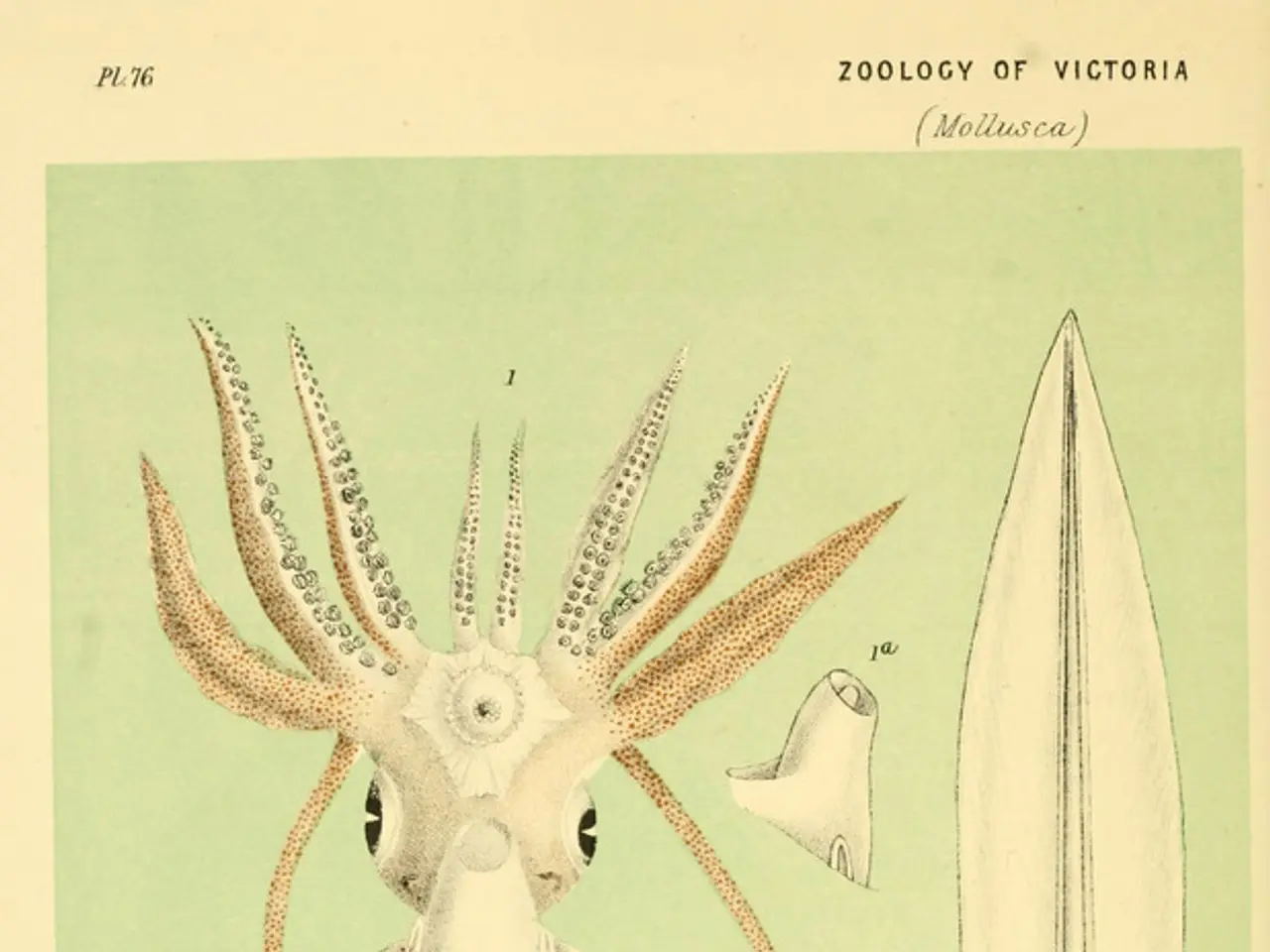Giant Squid's Ultimate Predator: The Toothsome Livyatan Whale
In the distant past, around 23 to 5.3 million years ago, a terrifying prehistoric whale named Livyatan ruled the seas during the Miocene epoch. This era was marked by significant climatic shifts and diverse marine and terrestrial habitats.
During the Miocene, the oceans experienced changing circulation patterns, likely influenced by global cooling, which altered nutrient distribution and biological productivity. This created productive and diverse marine ecosystems, perfect for large predatory whales like Livyatan to thrive. Marine plankton, mollusks, and vertebrates underwent accelerated evolution, supporting complex food webs.
On land, the Miocene saw a transition from evergreen broad-leaved forests to more open woodlands, shrublands, and grasslands, with mosaic habitats near water bodies like lakes and rivers. Seasonal changes were more pronounced, especially north of the Equator, with colder winters developing over time. Diverse fauna included many mammals such as antelope, pigs, giraffes, elephants, as well as predators like large cats and hyenas, reflecting rich and varied ecosystems.
Livyatan, being a giant predatory sperm whale species, likely inhabited warm to temperate seas during the Miocene. The changing ocean conditions and nutrient availability would have supported large marine mammals and their prey, making the environment ideal for Livyatan.
The abundance of large prey, including other whales and gigantic squid, was crucial for Livyatan's survival. However, changes in climate and ocean currents led to a decline in the availability of large prey, causing Livyatan's extinction.
Livyatan's fossils found in Peru provide evidence of its predatory habits and lifestyle. Wear patterns on Livyatan's teeth suggest brutal feeding behaviors. The whale offers a rare glimpse into a time when whales were not gentle giants but fierce predators for paleontologists.
Competition with other top predators like megalodon may have further strained Livyatan's survival. Modern sperm whales, Livyatan's closest living relatives, hunt by suction and mainly target squid, unlike Livyatan which relied on brute force.
The Miocene epoch seas supported a stunning diversity of marine life, including giant sharks, massive sea turtles, and enormous whales. Livyatan's reign was made possible by this rich and vibrant marine world. Today, Livyatan continues to fascinate scientists and the public alike, inspiring books, documentaries, and even monster movies.
- Researchers in the field of paleontology have been studying Livyatan, a prehistoric whale that ruled the seas during the Miocene epoch, to uncover insights about its evolution and predatory habits.
- The evolution of marine life during the Miocene era, characterized by significant climatic shifts and diverse marine and terrestrial habitats, has been a topic of interest in the scientific community, including aspects related to space-and-astronomy as it provides historical context to the Earth's climate.
- Despite its ferocious reputation, Livyatan's reign as a top predator in the marine ecosystem was threatened by medical-conditions, such as changes in climate and ocean currents that led to a decline in the availability of its preferred large prey.
- Livyatan's story of dominance and extinction in the Miocene seas highlights the intricate balance between species and their environments, a theme that resonates in various areas of entertainment, such as books, documentaries, and even movies about space-and-astronomy, weather, sports, and historical events.








